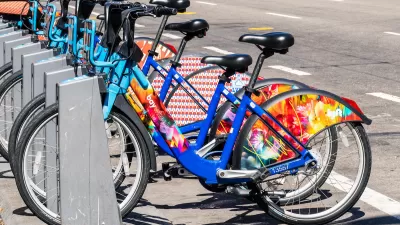An 800-mile HOT lane 'network' proposed for the Bay Area is now a bill in the state legislature. The MPO estimates it will reduce congestion and emissions while raising funds for transit. U.C. Berkeley's Pravin Varaiya insists it will lose money.
The Metropolitan Transportation Commission "estimates that turning the Bay Area's 500 miles of carpool lanes into toll lanes, along with adding 300 miles of new toll lanes, will generate $6.1 billion in profit over the next 25 years.
But one UC Berkeley engineering professor who has studied the effectiveness of carpool and toll lanes says the idea is wildly optimistic, and he predicts it will ultimately waste huge amounts of taxpayer money.
For years, professor Pravin Varaiya of UC Berkeley's electrical engineering and computer sciences department has pored over extensive amounts of CalTrans data. He concludes that the new toll lanes will lose money for two main reasons:
* In less-congested areas, not enough people will use them.
* On the Bay Area's more-congested freeways, heavy demand from carpoolers won't leave enough room for those single-occupancy vehicles that would pay the new toll.
"I'm willing to bet that the toll lanes won't be able recover operating costs, let alone the capital costs," he said.
Thanks to Justin Horner
FULL STORY: Bay Area Toll Lanes Could Lose Money

Alabama: Trump Terminates Settlements for Black Communities Harmed By Raw Sewage
Trump deemed the landmark civil rights agreement “illegal DEI and environmental justice policy.”

Planetizen Federal Action Tracker
A weekly monitor of how Trump’s orders and actions are impacting planners and planning in America.

The 120 Year Old Tiny Home Villages That Sheltered San Francisco’s Earthquake Refugees
More than a century ago, San Francisco mobilized to house thousands of residents displaced by the 1906 earthquake. Could their strategy offer a model for the present?

Opinion: California’s SB 79 Would Improve Housing Affordability and Transit Access
A proposed bill would legalize transit-oriented development statewide.

Record Temperatures Prompt Push for Environmental Justice Bills
Nevada legislators are proposing laws that would mandate heat mitigation measures to protect residents from the impacts of extreme heat.

Downtown Pittsburgh Set to Gain 1,300 New Housing Units
Pittsburgh’s office buildings, many of which date back to the early 20th century, are prime candidates for conversion to housing.
Urban Design for Planners 1: Software Tools
This six-course series explores essential urban design concepts using open source software and equips planners with the tools they need to participate fully in the urban design process.
Planning for Universal Design
Learn the tools for implementing Universal Design in planning regulations.
Clanton & Associates, Inc.
Jessamine County Fiscal Court
Institute for Housing and Urban Development Studies (IHS)
City of Grandview
Harvard GSD Executive Education
Toledo-Lucas County Plan Commissions
Salt Lake City
NYU Wagner Graduate School of Public Service




























